Instruction
The Lower Body: Focus on three areas for a better backswing
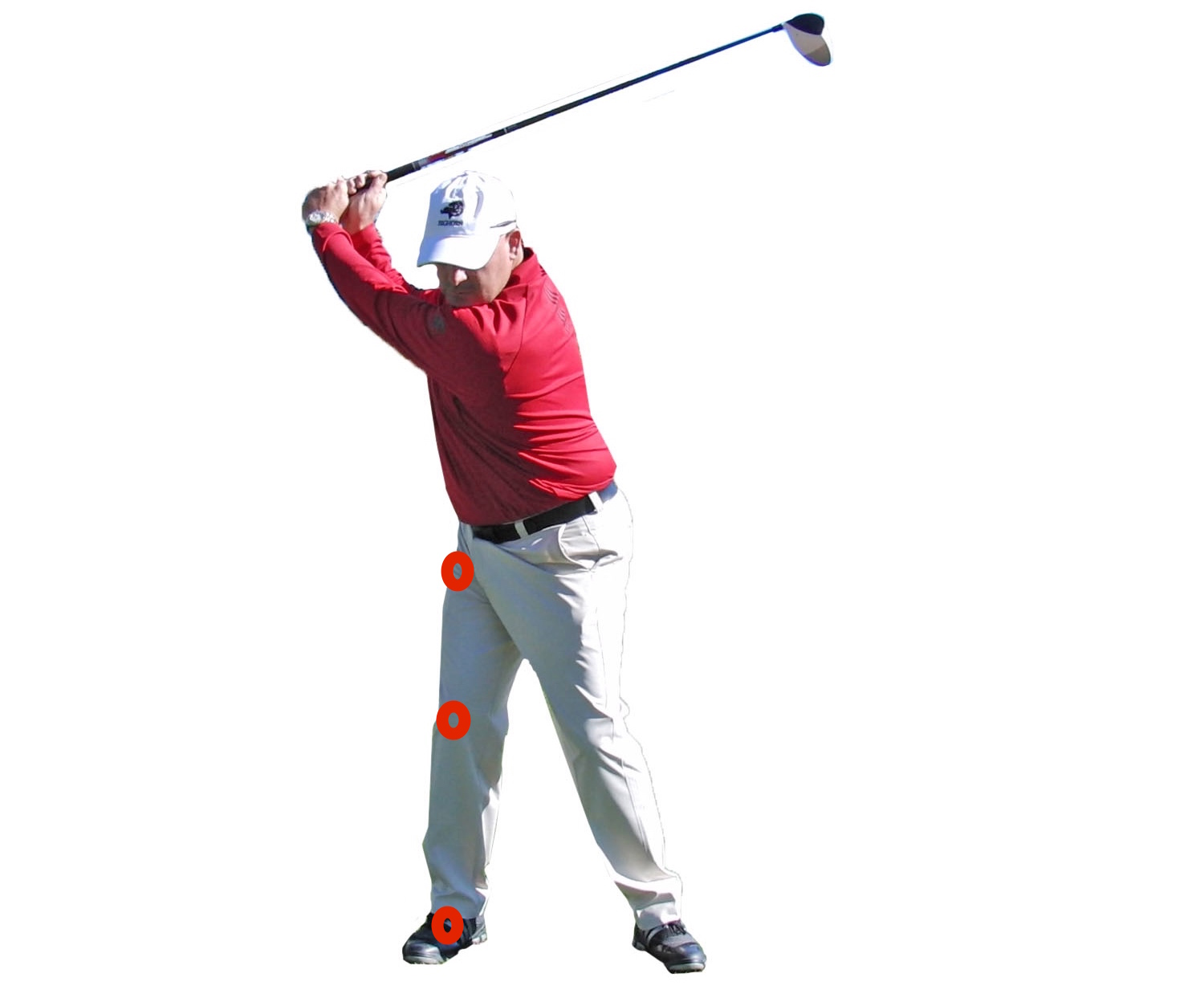
Your lower body action is important for many reasons within the golf swing. It can influence things like power, attack angle, balance and swing plane, to name a few.
What most people do not know is that there are three areas of in the lower body that you should be mindful of in order for you to gain the maximum efficiency on the backswing. In this article, I would like to explain these areas and why they are so important.
If you look at your lower body and its parts, you can split it up into a few components for the rear leg only:
- Foot Action
- Knee Action
- Hip Action
It’s vital for you to control each of these components in order to store the most potential energy and use it in your downswing. Losing control of one of these actions will cause you to have a “power leak” in your backswing, which will result in your lower body not work correctly during the downswing. Thus if you are having trouble with your forward swing, I bet you can link it back to your lower body actions to the top!
The Setup
In the photo above, you can see that the right foot, right knee and right hip are all lined up and ready for the backswing to begin. It’s these components that will govern the amount of backswing hip rotation you have and where your weight goes on your right foot to the top. It will also provide a stable platform for your pivot to work from during the transition. If you have a tendency to set up incorrectly — getting these “dots” out of line — you are only asking for trouble.
The Top (GOOD)
As you get to the top, the body should be “on the dots” once again, within reason, and at this point we are striving to achieve foundational stability. It’s NOT about immobilizing the lower body, because as you can see I am still twisting and turning, displacing weight to the top. These foundational points allow me to load up on the inside of the rear foot and be poised and ready to explode forward with the lower body leading and powering the pivot train through the ball.
The Top (BAD)
Anytime you slide off these dots, you will tend to see a “bowing” of the right side of your body at the top. This causes the weight to move to the outside of your right foot at the top and reduces the amount of torso lean over your right leg at the top as seen earlier. This will reduce width at the top as well.
As we know, whenever you slide on the backswing it is much tougher to use the lower body to begin the downswing and thus the shoulders and arms take over and an over-the-top path tends to happen. If you are having trouble starting your downswing from the ground up, I’d venture to say that your lower body work is sloppy to the top.
How can you work on your lower body issues and control your lower body more effectively to the top? Use my simple foot-in drill with practice swings and you will feel how to better control the lower body during your backswing. From there, try to find the same feeling with your normal right foot position in your full swing.
First, Turn in Your Right Foot at Address
Then, Take Your Swing to the Top
You will feel pressure on the inside portion of your right side when you do this drill correctly. This is the feeling you will look for when you return back to normal swings to the top.
A word of caution: I would not hit balls with this drill, as it tends to put too much pressure on your right knee, but it’s a great drill for you to work on in slow motion during your backswing.
If you can achieve this feeling to the top of your swing, you will be loaded and ready to hit the ball longer than ever before!
- LIKE99
- LEGIT21
- WOW4
- LOL4
- IDHT0
- FLOP4
- OB5
- SHANK17
Instruction
Clement: Laid-off or perfect fade? Across-the-line or perfect draw?

Some call the image on the left laid off, but if you are hitting a fade, this could be a perfect backswing for it! Same for across the line for a draw! Stop racking your brain with perceived mistakes and simply match backswing to shot shape!
- LIKE0
- LEGIT0
- WOW0
- LOL0
- IDHT0
- FLOP0
- OB0
- SHANK1
Instruction
The Wedge Guy: The easiest-to-learn golf basic

My golf learning began with this simple fact – if you don’t have a fundamentally sound hold on the golf club, it is practically impossible for your body to execute a fundamentally sound golf swing. I’m still a big believer that the golf swing is much easier to execute if you begin with the proper hold on the club.
As you might imagine, I come into contact with hundreds of golfers of all skill levels. And it is very rare to see a good player with a bad hold on the golf club. There are some exceptions, for sure, but they are very few and very far between, and they typically have beat so many balls with their poor grip that they’ve found a way to work around it.
The reality of biophysics is that the body moves only in certain ways – and the particulars of the way you hold the golf club can totally prevent a sound swing motion that allows the club to release properly through the impact zone. The wonderful thing is that anyone can learn how to put a fundamentally sound hold on the golf club, and you can practice it anywhere your hands are not otherwise engaged, like watching TV or just sitting and relaxing.
Whether you prefer an overlap, interlock or full-finger (not baseball!) grip on the club, the same fundamentals apply. Here are the major grip faults I see most often, in the order of the frequency:
Mis-aligned hands
By this I mean that the palms of the two hands are not parallel to each other. Too many golfers have a weak left hand and strong right, or vice versa. The easiest way to learn how to hold the club with your palms aligned properly is to grip a plain wooden ruler or yardstick. It forces the hands to align properly and shows you how that feels. If you grip and re-grip a yardstick several times, then grip a club, you’ll see that the learning curve is almost immediate.
The position of the grip in the upper/left hand
I also observe many golfers who have the butt of the grip too far into the heel pad of the upper hand (the left hand for right-handed players). It’s amazing how much easier it is to release the club through the ball if even 1/4-1/2″ of the butt is beyond the left heel pad. Try this yourself to see what I mean. Swing the club freely with just your left hand and notice the difference in its release from when you hold it at the end of the grip, versus gripping down even a half inch.
To help you really understand how this works, go to the range and hit shots with your five-iron gripped down a full inch to make the club the same length as your seven-iron. You will probably see an amazing shot shape difference, and likely not see as much distance loss as you would expect.
Too much lower (right) hand on the club
It seems like almost all golfers of 8-10 handicap or higher have the club too far into the palm of the lower hand, because that feels “good” if you are trying to control the path of the clubhead to the ball. But the golf swing is not an effort to hit at the ball – it is a swing of the club. The proper hold on the club has the grip underneath the pad at the base of the fingers. This will likely feel “weak” to you — like you cannot control the club like that. EXACTLY. You should not be trying to control the club with your lower/master hand.
Gripping too tightly
Nearly all golfers hold the club too tightly, which tenses up the forearms and prevents a proper release of the club through impact. In order for the club to move back and through properly, you must feel that the club is controlled by the last three fingers of the upper hand, and the middle two fingers of the lower hand. If you engage your thumbs and forefingers in “holding” the club, the result will almost always be a grip that is too tight. Try this for yourself. Hold the club in your upper hand only, and squeeze firmly with just the last three fingers, with the forefinger and thumb off the club entirely. You have good control, but your forearms are not tense. Then begin to squeeze down with your thumb and forefinger and observe the tensing of the entire forearm. This is the way we are made, so the key to preventing tenseness in the arms is to hold the club very lightly with the “pinchers” — the thumbs and forefingers.
So, those are what I believe are the four fundamentals of a good grip. Anyone can learn them in their home or office very quickly. There is no easier way to improve your ball striking consistency and add distance than giving more attention to the way you hold the golf club.
More from the Wedge Guy
- The Wedge Guy: Golf mastery begins with your wedge game
- The Wedge Guy: Why golf is 20 times harder than brain surgery
- The Wedge Guy: Musings on the golf ball rollback
- LIKE86
- LEGIT13
- WOW6
- LOL1
- IDHT0
- FLOP4
- OB1
- SHANK8
Instruction
Clement: Stop ripping off your swing with this drill!

Not the dreaded headcover under the armpit drill! As if your body is defective and can’t function by itself! Have you seen how incredible the human machine is with all the incredible feats of agility all kinds of athletes are accomplishing? You think your body is so defective (the good Lord is laughing his head off at you) that it needs a headcover tucked under the armpit so you can swing like T-Rex?
- LIKE0
- LEGIT2
- WOW2
- LOL0
- IDHT0
- FLOP0
- OB0
- SHANK2
-

 19th Hole2 weeks ago
19th Hole2 weeks agoDave Portnoy places monstrous outright bet for the 2024 Masters
-

 19th Hole3 days ago
19th Hole3 days agoJustin Thomas on the equipment choice of Scottie Scheffler that he thinks is ‘weird’
-

 19th Hole2 weeks ago
19th Hole2 weeks agoTiger Woods arrives at 2024 Masters equipped with a putter that may surprise you
-

 19th Hole3 days ago
19th Hole3 days ago‘Absolutely crazy’ – Major champ lays into Patrick Cantlay over his decision on final hole of RBC Heritage
-

 19th Hole2 weeks ago
19th Hole2 weeks agoTwo star names reportedly blanked Jon Rahm all week at the Masters
-

 19th Hole1 week ago
19th Hole1 week agoReport: LIV Golf identifies latest star name they hope to sign to breakaway tour
-

 19th Hole1 week ago
19th Hole1 week agoNeal Shipley presser ends in awkward fashion after reporter claims Tiger handed him note on 8th fairway
-

 19th Hole1 week ago
19th Hole1 week agoBrandel Chamblee has ‘no doubt’ who started the McIlroy/LIV rumor and why

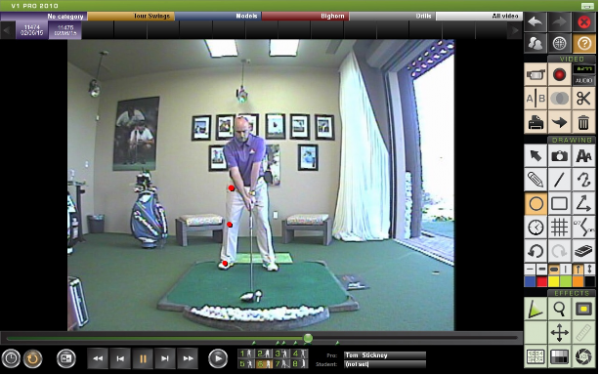
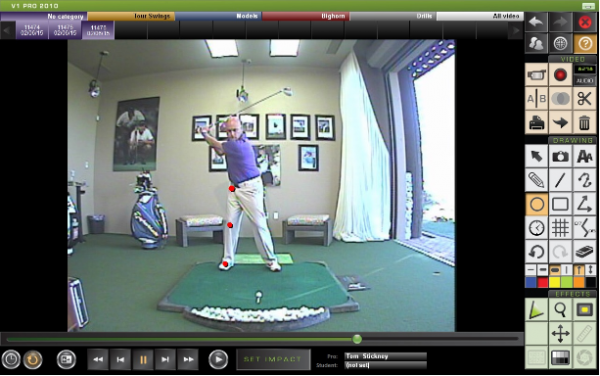
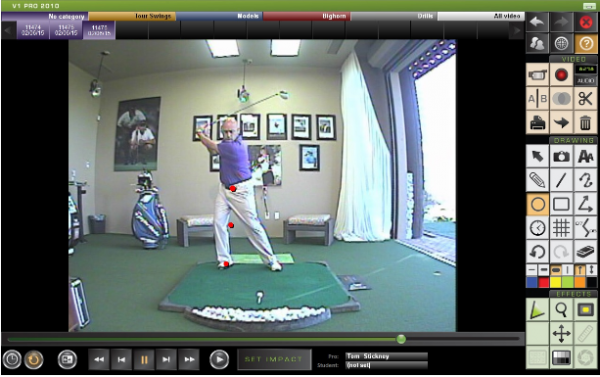
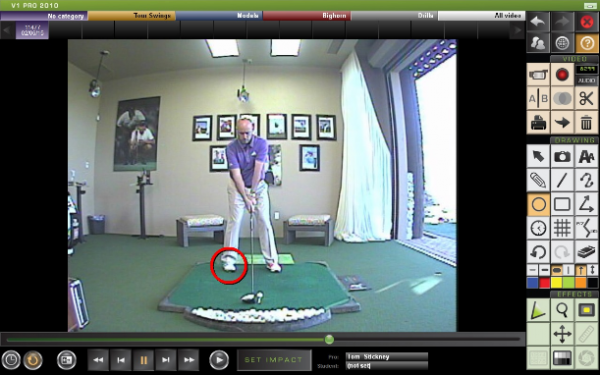
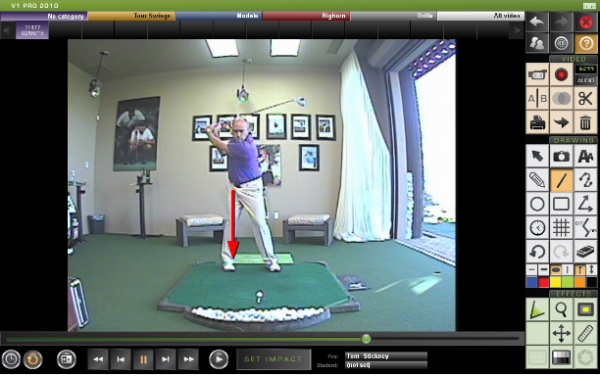















LY
Mar 6, 2015 at 1:39 pm
Many,many years ago I heard Ken Venturi giving a golf lesson and he said that one of the most important swing thoughts for most amateurs was to maintain the flex in the right knee. He said you will see a lot of amateurs straightening out their right knee on the takeaway which changes their spine angle, and causes their head to move up. (if you are a right handed player). He said that if you could maintain the same flex in the right knee throughout your backswing you had a better chance of making solid contact. This is the only swing thought that I use. When someone at my club wants me to look at their swing, the first thing I look at is the right knee. And about 98% of the time they either straighten the right knee or it moves way off the ball to the point that the inside part of their right foot is coming up slightly off of the ground. Naturally when I mention this to them they immediately start hitting the ball better and I look like I really know what I’m talking about!
This was a great article and I will be forwarding this to a few of my high handicap friends.
Shaun
Mar 4, 2015 at 7:07 pm
I have a bad swaying problem and my instructor told me you want to have the feel of turning and looking over your right shoulder at something behind you so I could feel the turn in my torso and hip. It’s helped a great bit and I’m looking forward to trying this as well. Anything to help get rid of this darn swaying. Thanks for the tip Tom.
Barry S.
Mar 4, 2015 at 8:08 pm
Shaun, I hope you don’t mind me putting something out there for your consideration. Without seeing you swing I would take an educated guess and say the reason you have a bad swaying problem is because you are taking the club back wide along the target line. Watch Sam Snead’s takeaway. He didn’t take the club wide he took it around or what people incorrectly call inside. Would like to add more but I haven’t figured out how to make paragraphs here so let’s just leave it at that.
https://www.youtube.com/watch?v=qYbiwWi_9k0&feature=youtu.be
Shaun
Mar 4, 2015 at 9:45 pm
Nail on the head Barry! I don’t mind the input and thanks for it. I’ll have to work on the inside take away and see if that helps me out. I get thru the ball great according to the instructor but I’m losing power & torque from my swaying causing an overlong backswing and reverse pivot. If you anybody else has input I more than welcome it. Thanks again
Jeremy
Mar 4, 2015 at 12:59 am
I think a backwards sway—as opposed to a proper hip turn—also puts a lot of strain on your hip, hamstrings, and glute in the back leg. That’s what I’ve been finding after trying to return to full strength after knee surgery. Everything, including my lower back, feels better when I keep my spine straighter and really rotate at the hips instead of swaying my weight backwards.
Speedy
Mar 3, 2015 at 10:12 pm
As the old instruction said, swing around the fence post.
theo
Mar 4, 2015 at 10:52 am
Good visual.
tom stickney
Mar 3, 2015 at 4:47 pm
Philip– Use your mirror and watch yourself swing to the top…that’s the best drill of all
tom stickney
Mar 3, 2015 at 4:46 pm
Mike– check to see if your rear knee is straightening…sounds like a reverse hip shift to me
Mike
Mar 3, 2015 at 4:08 pm
Tom – My foot and knee stay on the dots but my hip moves toward the target. The opposite of your example. Any ideas?
Philip
Mar 3, 2015 at 3:37 pm
Tom, thank you very much for the information and your time to prepare it.
I have done similar drills to this one, just to help my body understand the “feel” I am looking for and then allow my body to take control now that it can feel what I am targeting. I now am able to do what you describe in the above video (although I did the “bad” for WAY too long) because I learned to feel it and trust my body to repeat it.
This winter I was finally able to see the golf swing as a swing and not a method to hit a golf ball. I improved my swing greatly with drills like above and also just making swings in slow motion (with a mirror sometimes) so that I could connect the dots between set-up and the swing. I’ve never learned so much, so fast, with so little effort.
I am interested in any other drills you have that do not involve hitting a golf ball and focus on paying attention and discovering golf “feels”.
tom stickney
Mar 3, 2015 at 3:14 pm
James– 1) that’s an ok way to do it, if you have the flexibility to do so. 2) Moves into your left toe then into your heel for most people during the downswing. No problem sir
james
Mar 3, 2015 at 3:20 pm
interesting! Thanks.
tom stickney
Mar 3, 2015 at 3:12 pm
Barry– understanding the areas of concern will help those whom are having issues with their backswing. Of course you don’t think about all of these when you swing but it’s nice to understand how it’s all put together
tom stickney
Mar 3, 2015 at 3:11 pm
Barry– there are many ways to describe the backswing motion- the one you describe was popularized by Jim McLean.
Barry S.
Mar 3, 2015 at 2:58 pm
The BS pivot is a shift and a turn. You step onto your right foot similar to taking a step when walking followed closely by a turn.
Are you worried about Foot Action, Knee Action and Hip Action or their alignments when you walk? I hope not or it will take you forever just to cross the street.
james
Mar 3, 2015 at 2:30 pm
Tom: thanks for the article, as it deals with somethings i have been wondering about. Two question:
1. I find that weight being placed at the inside of my rear foot restricts my hip turn. I’m okay with that but lately I’ve been hearing lot of pros talk about not restricting the hip. Any comment on this?
2. Where should the weight be during the downswing and the follow through in regards to the feet? I am currently finding most of the weight being placed at the heel of my lead foot (and causing ankle pain, hence my curiosity) during the transition and finish.
Thank you for your time in regards to these questions in advance.